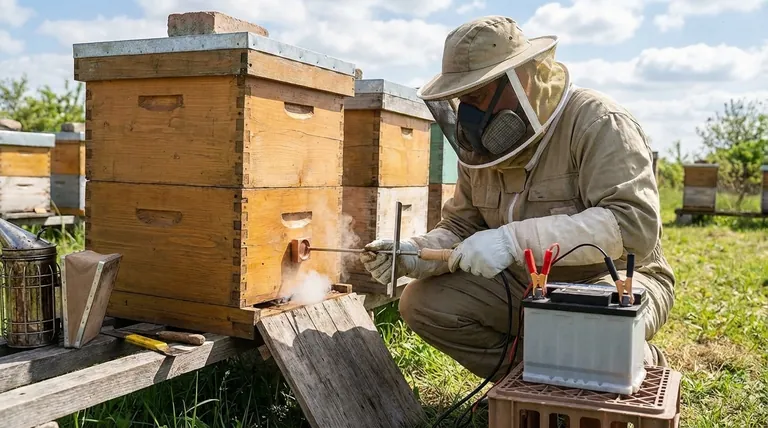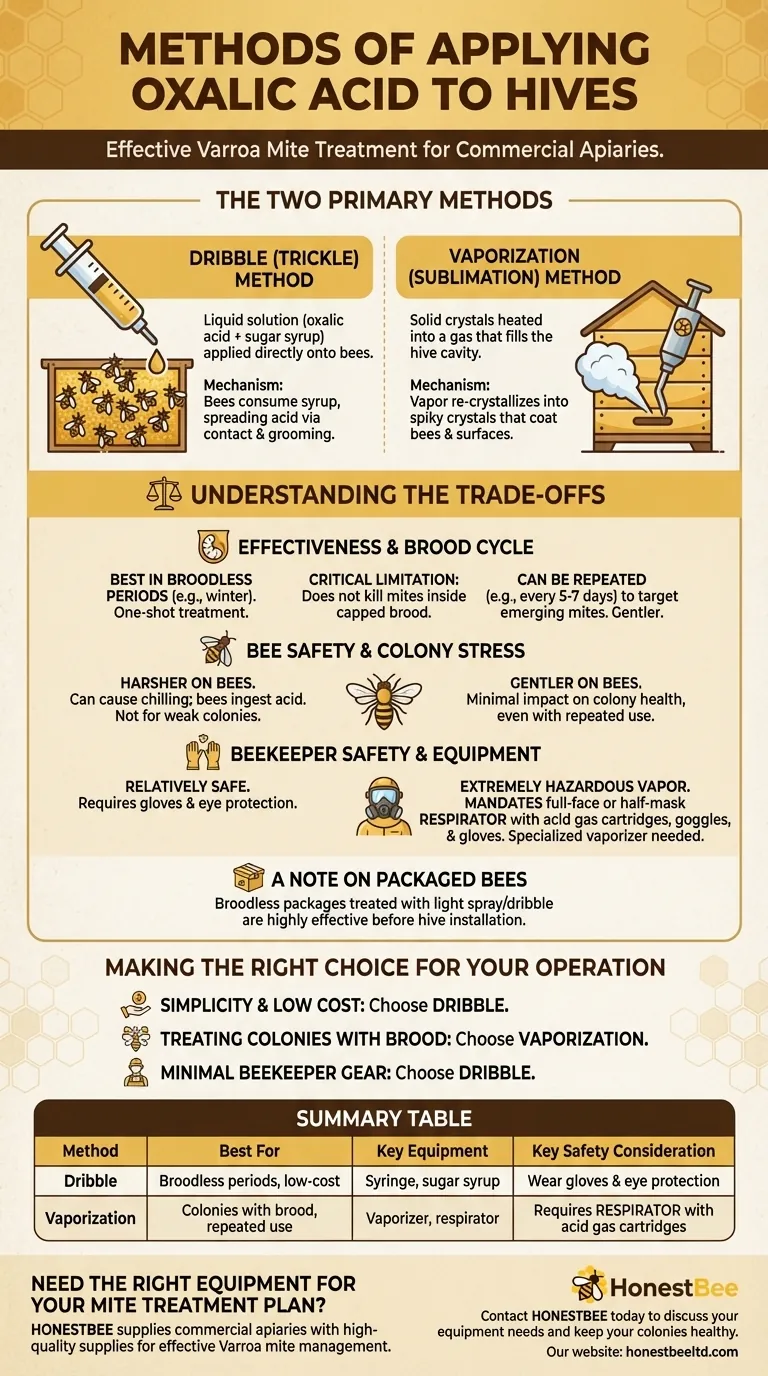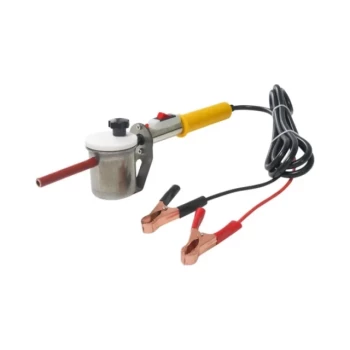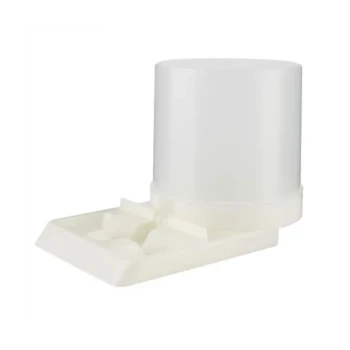For treating Varroa mites in beehives, there are two primary, approved methods for applying oxalic acid. The first is the dribble method, which involves trickling a solution of oxalic acid and sugar water over the bees. The second is vaporization, where oxalic acid crystals are heated into a gas that fills the hive.
Choosing between the dribble and vaporization methods is a critical decision based on the time of year, the presence of brood in the hive, your budget for equipment, and your tolerance for personal safety risks.

The Two Primary Application Methods
Understanding the mechanics of each method is the first step toward effective and responsible mite management. Both methods target phoretic mites—the mites physically attached to adult bees—but do so in very different ways.
The Dribble (Trickle) Method
This method involves creating a liquid solution to be applied directly onto the bees.
First, oxalic acid dihydrate crystals are dissolved in warm 1:1 sugar syrup. Using a large syringe, this solution is then gently dribbled or trickled into the spaces between the frames, directly onto the clusters of bees.
The bees consume the sugar syrup and spread the acid throughout the hive via contact and grooming, which is lethal to the mites.
The Vaporization (Sublimation) Method
This method uses a specialized piece of equipment to turn solid oxalic acid crystals into a gas.
A tool known as a vaporizer, containing a measured dose of oxalic acid crystals, is inserted into the hive entrance. When heated, the crystals sublimate, turning directly into a vapor that fills the hive cavity.
As it cools, the vapor re-crystallizes into microscopic, spiky crystals that coat the bees and all internal hive surfaces. These crystals are fatal to Varroa mites on contact but are generally well-tolerated by the bees.
Understanding the Trade-offs
Neither method is universally superior. The correct choice depends entirely on your specific situation and management goals.
Effectiveness and Brood Cycle
A critical limitation of oxalic acid is that it does not kill mites inside capped brood cells. Its effectiveness is almost entirely dependent on the absence of brood.
For this reason, both methods are most effective during a natural broodless period, such as in late fall or winter.
The dribble method is considered a "one-shot" treatment for a broodless colony. The vaporization method, being gentler, can be repeated at intervals (e.g., every 5-7 days) to kill mites as they emerge with new bees, but this is a more labor-intensive approach.
Bee Safety and Colony Stress
The dribble method is harsher on the bees. It gets them wet, which can cause chilling, and they directly ingest the acid. It should not be used on weaker colonies or more than once per season.
Vaporization is widely considered to be gentler on adult bees. Because the bees do not ingest the acid, the impact on colony health and strength is minimal, even with repeated applications.
Beekeeper Safety and Equipment
This is a non-negotiable point of difference. The dribble method is relatively safe for the beekeeper, requiring only gloves and eye protection during mixing.
Oxalic acid vapor is extremely hazardous to human health, causing severe damage to the respiratory tract and lungs. The vaporization method mandates the use of a full-face or half-mask respirator with appropriate acid gas cartridges, along with safety goggles and gloves. It also requires the purchase of a specialized vaporizer.
A Note on Packaged Bees
A third, more specialized use of oxalic acid is for treating packaged bees before they are installed in a hive. Because a bee package is, by definition, broodless, a light spray or dribble of oxalic acid solution is an extremely effective way for producers to ensure their bees are sent to customers with a very low mite count.
Making the Right Choice for Your Mite Treatment
Your decision should be a deliberate one based on your priorities.
- If your primary focus is simplicity and low cost: The dribble method is highly effective in a broodless colony and requires no expensive specialized equipment.
- If your primary focus is treating colonies that may have brood: Vaporization is the better choice, as its gentleness allows for the repeated treatments necessary to target mites as they emerge.
- If your primary focus is beekeeper safety with minimal gear: The dribble method is significantly less hazardous and does not require investment in or training with a respirator.
Ultimately, using either method correctly during a broodless period is a powerful tool for improving the long-term health of your colonies.
Summary Table:
| Method | Best For | Key Equipment | Key Safety Consideration |
|---|---|---|---|
| Dribble/Trickle | Broodless periods, low-cost treatment | Syringe, sugar syrup | Wear gloves and eye protection |
| Vaporization | Colonies with brood, repeated treatments | Vaporizer, respirator | Requires a respirator with acid gas cartridges |
Need the right equipment for your mite treatment plan?
HONESTBEE supplies commercial apiaries and beekeeping equipment distributors with the high-quality, reliable supplies needed for effective Varroa mite management. Whether you require durable syringes for the dribble method or specialized vaporizers for sublimation, our wholesale-focused operations ensure you get the gear you need to protect your hives.
Contact HONESTBEE today to discuss your equipment needs and keep your colonies healthy.
Visual Guide

Related Products
- Oxalic Acid Vaporizer 12V for Bee Varroa Mite Treatment
- Durable 12V Oxalic Acid Vaporizer for Varroa Mite Treatment Beehive Beekeeping Tool
- Heavy Duty 12V Oxalic Acid Evaporator Vaporizer for Bee Varroa Mite Treatment Beekeeping Fumigator Atomizer
- 12V Bee Mite Removal Evaporator Oxalic Acid Vaporizer for Bee Fumigation Treatment 180W Atomization
- Adjustable Formic and Acetic Acid Dispenser for Bee Mite Treatment
People Also Ask
- What are the registered application methods for oxalic acid in beekeeping? Choose the Right Varroa Mite Treatment
- What safety precautions should be taken when using oxalic acid for vaporization? Protect Yourself and Your Bees
- What safety precautions should be taken during Oxalic Acid Vaporization? Essential PPE & Procedures
- What is the most common method of applying oxalic acid for mite control? Dribble vs. Vaporization for Varroa
- What are the methods for applying oxalic acid in beekeeping? Control Varroa Mites Effectively



















